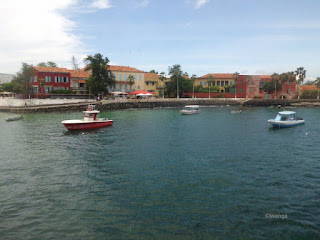The Island of Gorée was the largest slave trading centre on the African coast from the 15th to the 19th century. The island is off the coast of Senegal and accessible by ferry from Dakar. Gorée was controlled, in succession, by different slave traders namely the Portuguese, Dutch, English and French.
It is now a UNESCO heritage site and the House of Slaves (Maison des Esclaves), one of its buildings, a museum and memorial to the tragedy that was the slave trade. It is necessary to mention that there is ongoing controversy around some historical facts about Gorée island and its place in the slave trade.
Presbytere De Gorée
The House of Slaves (Maison des Esclaves) is a significant monument that has attracted visitors from all over the world including notable ones like Nelson Mandela, Pope John Paul II and Barack Obama, among others. Now a museum, there is controversy regarding the number of slaves that were held here for export. There may be no unanimous figures but the museum still stands as an emotional memorial to the millions who either died on the way to Gorée, in the dungeons of this house, on the way to the Americas or survived and endured their cruel fate.
The House of Slaves was the place where I most felt the reality and weight of Gorée's past. The sunny courtyard and bright exterior are a sharp contrast to the interior and the dark history it holds. The dark narrow corridor, dingy dungeons, iron shackles, labels ("Jeune filles" "Recalcitrants" etc) the door of no return and overall grim air capture the island's painful history in a sobering way.
"If all the sky were paper and all the seas ink, I would not be able to describe the brutality of the slave trade" - W. Bosman, 1701
Approaching Gorée from Dakar
The Door of No Return, located in the House of Slaves and looking out to the Atlantic, was the final exit point for captive Africans exported as slaves. The door represented a forced and brutal final separation from home and loved ones, and passage to a harrowing voyage and fate. It has been claimed that millions of women, men and children were forced through this door, marking their last contact with their homeland.
Gorée Rue Saint Germain. There are many buildings and streets on the island but no cars.
This statue is one of the landmarks on the island.
On the ferry to Gorée














No comments:
Post a Comment